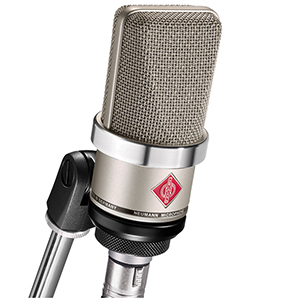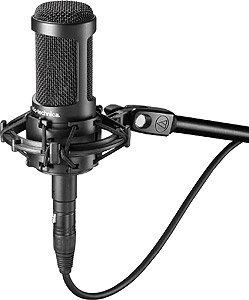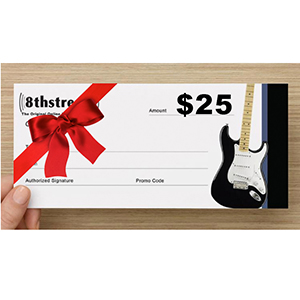896 HD FireWire Recording System w/Digital Performer 5 Software
Item # 6703
Sale Price!
$1,299.00
We're sorry, this product is no longer available.
This bundle includes the MOTU 896HD FireWire Recording System w/Digital Performer 5 Software at a special discount price!
MOTU 896HD
The 896HD replaces the 896 at the same price and adds many new features, including more simultaneous outputs (22), 192kHz operation, 8-bus monitor mixing and stand-alone operation.
Like the original 896, the 896HD provides 8 channels of 24-bit analog I/O, 8 channels of ADAT optical digital I/O, 8 built-in mic pre-amps, 96kHz AES/EBU digital I/O with sample rate conversion, word clock sync, and sample-accurate ADAT SYNC. The analog inputs are on Neutrik Combo jacks and the outputs are on XLR jacks. The front panel provides three banks of 10-segment level meters, 8 trim knobs for the analog inputs, and 8 toggle switches for independent 48-volt phantom power for each analog input.
The 896HD adds two additional separate main outputs (on XLRs), plus separately accessed front-panel headphone output, providing 22 separate outputs. All analog inputs and outputs are equipped with latest-generation 192kHz converters. The AES/EBU and optical digital I/O sections support sample rates up to 96kHz. Like the original 896, the AES/EBU I/O provides sample rate conversion on both input and output.
Additional new features include:
* DSP-driven digital mixing and monitoring for all 18 inputs - users can connect mics, guitars, synths and effects processors, and monitor everything from the 896HD’s main outs or headphone jack with no separate mixer needed and no latency. The 896HD supports up to four separate stereo monitor mixes assigned to any four digital or analog output pairs. For example, separate monitor mixes could be set up for the main outs and headphone outs, while two additional stereo busses could be used for send/return loops to reverb units or other outboard gear. Each mix can support all 18 inputs (8 XLR analog, 8 ADAT optical and 2 AES/EBU). A new "CueMix Return" software feature lets the user route one of the four CueMix DSP mixes back to the computer. This allows users to record their entire mix, including monitored inputs, back into the computer, for example.
* Front-panel fader control -- 896HD users can change the level of each CueMix DSP master fader with the MONITOR LEVEL knob on the front panel, pushing the knob to cycle through the four CueMix busses and turning it to adjust the output level. The entire CueMix, including individual input levels, pan settings, mute, solo, etc. can be fully programmed with the included CueMix Console software.
* Stand-alone operation -- An 896HD user can program the unit at the studio with the CueMix Console software and then take the 896HD on the road for mixing/monitoring without a computer. Bus levels can be adjusted without the computer as described above.
* 96kHz optical digital I/O -- The ADAT optical digital inputs and outputs provide 4 channels at 88.2 or 96 kHz via the S/MUX standard.
The 896HD provides these additional features:
* ADAT sync input -- allows sample-accurate digital transfers with ADATs or any other device that supports ADAT SYNC.
* Word clock input/output -- allows the 896HD to be synchronized with any digital audio clock source. For example, with a MOTU MIDI Timepiece AV-USB interface and synchronizer, the 896HD can be resolved to SMPTE time code, word clock, blackburst or video.
* Two 1394 FireWire connectors -- connects the 896HD to the FireWire port on any computer via a standard FireWire cable. Two connectors are provided to allow daisy chaining of multiple 896HD’s or other FireWire devices without the need for a FireWire hub.
* IEC power receptacle -- the 896HD has an internal power supply with a convenient external switch for either 115V or 230V operation.
* Universal compatibility -- the 896HD is compatible with virtually all audio software on Mac OS 9, Mac OS X and Windows Me/2K/XP.
* Includes AudioDesk -- sample-accurate workstation software for Mac OS with 24-bit recording/editing and 32-bit automated mixing/processing/mastering.
0 0
- MOTU’s Digital Performer is an integrated MIDI and audio sequencer for studio recording, film scoring, live performance, and remixing; and the choice of professionals worldwide. Digital Performer offers an easy-to-understand workflow and professional tools like unlimited tracks, unlimited undo, surround sound support, 64-bit mastering, sample-accurate MIDI and audio editing, automatic tempo calculation for film scoring, and lots more. Its simple and easy-to-use track layout, mixing board, and transport controls are all you need for the foundation of a powerful computer-based production system. With a flexible, customizable interface; loop-based production; linear sequencing and recording; and part and score notation-based composition you can work the way you want. Complete Mac OS X support takes full advantage of Core Audio and Core MIDI services so you get sample-accurate MIDI Time Stamping, Core MIDI patch list support, Audio Unit plug-ins and virtual instruments, support for multiple Core Audio interface drivers, and more. New features include 6 new instrument plug-ins, track folders, Meter Bridge level monitoring, 4 new editing tools, scoring enhancements; enhanced input monitoring; MIDI keys; and many productivity enhancements.
Six new virtual instruments
- From classic FM to vintage analog, six intriguing virtual instruments will spark your creativity and get you making music in minutes. Browse the hundreds of supplied presets, choose a sound or drum kit, and then hit the record button. The rest is up to you. Load your own samples or program custom sounds. You get two one-oscillator subtractive synths, one two-oscillator subtractive synth, a sample player, a drum module and an FM synth. Get ready to crank out some serious sound from your Mac. All six instruments are designed for easy, streamlined operation and CPU-efficient performance. New instruments include: BassLine monophonic bass synth, PolySynth analog-style polyphonic pad synth, Modulo programmable 2-oscillator subtractive synth, NanoSampler easy software sample player, Model 12 programmable drum module, and Proton FM synthesizer.
BassLine monophonic bass synth
- BassLine is an analog-style monophonic bass synth dedicated to the bass, the whole bass, and nothing but the bass. The result is monstrous low end and instant killer bass lines. BassLine has one oscillator that blends saw and square waveforms; a low-pass filter with cutoff and resonance; simple decay envelopes for the filter and amplifier; and several additional analog synth features.
PolySynth analog-style polyphonic pad synth
- PolySynth is a retro analog-style polyphonic pad synth inspired by the Roland Juno 106 and other one-oscillator analog synths from the ’80s. It is capable of a wide variety of sounds thanks to a digital control oscillator which can be adjusted with varying amounts of de-tune, triangle wave, sawtooth, rectangle (square) wave, sub-oscillator 1, sub-oscillator 2, and noise. Lush pads, rude squawks, twisting sweeps - just choose a preset and go.
- The single LFO can modulate pitch (for vibrato), pulse width (for the square wave and sub-oscillators) or filter depth (for the classic "wah" effect, among others). The resonant low-pass filter is equipped with frequency and resonance controls, key tracking, velocity control and an ADSR envelope, which can also be applied as an overall envelope for each note. Chorus and distortion provide plenty of punch for the thickest of pads and searing lead lines. Classic filter and envelope design make for quick, intuitive programming.
Modulo programmable 2-oscillator subtractive synth
- Modulo is a highly programmable 2-oscillator subtractive synth like BassLine and PolySynth combined with performance-enhancing drugs. Modulo is built on two independent oscillators each capable of producing 58 digital waveforms including basics such as sine, square, saw, and rectangle.
- The oscillator waveforms can be adjusted with symmetry, tuning, and a unique phase shift that lets you split the oscillator, offset the resulting waveforms up to 180 degrees, then either subtract or multiply the two split waveforms to produce interesting timbral shifts. This effect can even be modulated with several possible modulation sources, such as one of the two LFOs. In fact, Modulo provides five different modulation sources and up to seven destinations. Sources include the two LFOs, modulation envelope, external mod wheel and note-on velocity, all of which can be assigned to filter frequency, oscillator pitch, oscillator phase shift, oscillator symmetry, and many other controls. The results produce living, breathing, dynamic, responsive sounds that you can mold in realtime as you write and mix your music.
- A resonant multi-mode filter, three envelopes (for the amplifier, filter and general purpose modulation), detune, noise and modulation matrix provide plenty of additional sound shaping control. Modulo also has an easy bank and patch management system to keep you organized.
NanoSampler easy software sample player
- Nanosampler is one of the easiest way to play samples ever devised. Load a sample and play it. Easy. You can drag and drop an audio file from any other DP window or your Mac desktop straight to the Nanosampler LCD display to instantly play it from your MIDI controller. It also puts all of the basic sampler features right at your fingertips: set a sample start/end time, set a crossfade loop, apply the multimode filter and automate cutoff frequency or other parameters, apply an envelope to the amplitude or filter and add some LFO effects.
- Build your own personalized library of samples, organized as you wish in the Mac OS Finder and accessed instantly from Nanosampler sub-menus that reflect your customized folder organization. You can even collect the samples being used, regardless of their source location, into your DP project folder for easy archiving and session exchange with your colleagues. On top of it all, Nanosampler is very CPU efficient, so you can open as many Nanosamplers as you have samples to play.
Model 12 programmable drum module
- Model 12 is a 12-part programmable drum module that delivers instant drums with hundreds of drum samples and dozens of kits ready to load and go. You can also build your own kits with surprisingly deep programming features. Each of Model 12’s individual parts has two sends, allowing you to independently apply any effects or other external processing you wish to each part. If you have more extensive percussion parts, you can instantiate multiple instances of Model 12. One instance is your basic kit, while another is percussion.
Proton FM synthesizer
- Proton is the sixth and final instrument plug-in included with DP5. Proton is an imaginative and provocative two-operator frequency modulation (FM) synthesizer that delivers classic, bright, shimmering and expressive FM synth sounds that serve as a perfect compliment to the rest of DP5’s new instrument lineup. FM synthesis involves modulating one oscillator’s frequency (the carrier) with another oscillator (the modulator) at rates in the audible range (i.e. not slow LFO rates). Different frequency ratios of modulator and carrier operators produce a world of interesting timbres. The pioneering Yamaha DX7 delivered a wide range of sounds using only sine waves with six operators. Proton delivers an equally broad palette of sounds with a streamlined 2-op architecture driven by its unique wavetable knob, instead of the added overhead and complexity of additional operators. As such, Proton may be the most easily programmable FM synth ever created. A real-time display in the center of the window display the spectral content or periodic waveform being generated by the current settings. Additional controls include an FM LFO, modulation pitch envelope, FM amount envelope and overall ADSR envelope.
Track folders
- Track folders let you organize your lengthy track lists into folders and sub-folders and show or hide track groups with a single click on the disclosure triangle. You can put folders within folders for as many levels as you need. Assign a unique color to the tracks in each folder to further enhance your project organization. Track folders appear throughout DP5 in all windows that show multiple tracks, including all track show/hide selectors. Option-click and command-click shortcuts help you quickly collapse and expand multiple folders, or even all folders.
Meter bridge
- The Meter Bridge is dedicated to monitoring all signal paths in the Digital Performer mixing environment. It is a new window and the central pane in the Consolidated Window. With a single click you can independently show or hide available hardware inputs, available hardware outputs, busses, bundles, and tracks as desired. The long-throw, scalable meters have extremely fast, smooth and accurate ballistics. You can easily toggle between a scalable linear layout and a wrap-around layout that displays all meters in multiple rows for an instant bird’s-eye view of all signal paths.
Editing tools
- DP5 has four new audio editing tools to speed up your edits: Trim, Slip, Slide, and Roll. Trim lets you trim audio regions more quickly with a dedicated tool. Slip allows you to move the waveform inside an audio clip earlier or later without affecting the left or right edge of the audio region. Slide allows you to move the edges of the audio region earlier or later by the same amount in one drag operation while the audio inside the clip remains anchored to its current position in time. Roll will let you drag the border between two adjacent audio regions in one operation.
Film and video scoring enhancements
- Building on an already strong feature set designed for film and TV composers, DP5 includes several enhancements. Visual cues streamers, flutters, and punches are now available with extensive control over application. You can also now customize your own visual and audio click counts.
Enhanced input monitoring
- Independent input monitoring on each audio track in Digital Performer 5 will allow you to listen to a live audio signal from the track’s assigned input independent of the track’s record-enable state. Four Audio Patch Thru modes (Auto, Blend, Input Only, Off) give you several options for input monitoring behavior in various situations. Blend mode lets you hear both the live input and the disk audio during playback before you punch in for recording.
Soundbite volume and gain
- Draw a volume curve on an audio clip and it stays with all instances of the clip. Apply an overall, non-destructive amount of gain or attenuation to a soundbite. All instances of the soundbite are affected.
MIDI keys
- The new MIDI Keys window provides convenient, basic MIDI note entry so you can trigger synths, enter MIDI notes, and step record MIDI notes on your computer keyboard.
Productivity enhancements
- Digital Performer 5 introduces dozens of productivity enhancements. Some of the highlights are support for Pro Tools 7; track enable/disable; convenient MIDI device setup from within DP5; tabs in the Waveform Editor for direct access to embedded tempo; pitch and volume meta-data; and a quicker, more convenient process for adding virtual instruments.
Related Gear
-

Empirical Labs EL8 Distressor
Item # 3281
Description
$1,450.00
Single Channel Harmonic DISTortion & classic Knee compRESSOR -

Neumann TLM 102 - Nickel
Item # 61828
Description
$729.00
Large Diaphram Condenser Mic -

MOTU M4
Item # 80674
Description
$269.95
4-in/4-out USB-C Audio Interface w/ 2 Microphone Preamps -

Audio Technica AT2050
Item # 44262
Description
$269.00
Multi Pattern Large Diaphragm Condenser Microphone -

8th Street Music $25 Gift Certificate
Item # g25
Description
$25.00
Gift Certificate (may be purchased in multiple amounts)
 896 HD FireWire Recording System w/Digital Performer 5 Software
MPN #:
UPC #:
Regular price: $0
$1299.0000
Available from:
8th Street Music
Condition: New
Out of Stock
896 HD FireWire Recording System w/Digital Performer 5 Software
MPN #:
UPC #:
Regular price: $0
$1299.0000
Available from:
8th Street Music
Condition: New
Out of Stock



